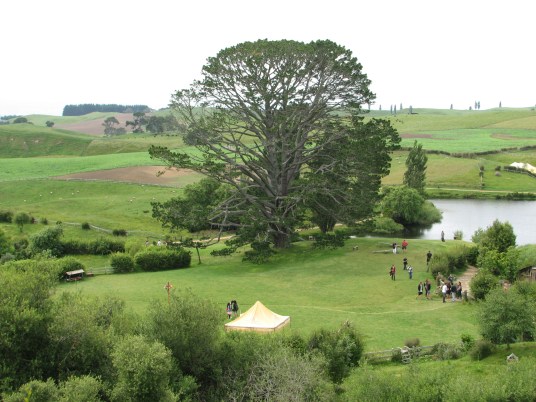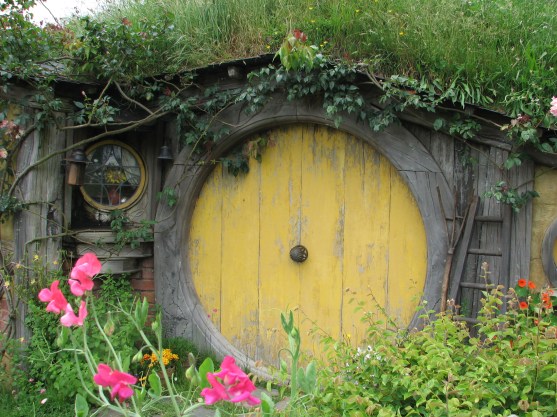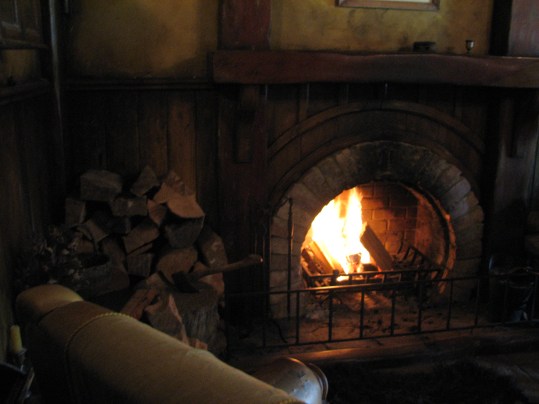John Ronald Reuel Tolkien (3 January 1892 – 2 September 1973), better known as JRR Tolkien, is commonly described as an English writer, poet, philologist and university professor.
I first came into contact with his writing when I was 10 years old and read some of his works for the first time, The Hobbit and The Lord of the Rings trilogy. I needed plenty of reading for the long Grey Hound bus trips my mother and I took that summer on visits to family in Pennsylvania, so I had packed Tolkien along with my clothes and toothbrush.
As Tolkien did, I had an early love for the Fairy Books by Andrew Lang. My brother, Geoff, took me to my first public library when I was six years old and helped me get the “golden ticket to knowledge” otherwise known as a library card. Nested among the towering stacks like a dormouse in an oak grove, I developed a passion for all ancient stories mythological, gathered from a wide spectrum of cultures.
Tolkien was at one time a close friend of C. S. Lewis, whose Narnia books I found to be overtly squirt-gun-in-the-face Christian and overly simplistic in their storytelling and characters. I would later encounter Lewis’s autobiographical books and appreciate his adult works as a Christian apologist. In terms of fictional narrative however, to me as a youth, Tolkien’s knowledge of ancient Icelandic and European myths and cultures conveyed a gritty grappling with issues of good and evil that seemed at once realistic and transcendent to a Western child as myself.
On a warm September night in 1931, Henry Victor Dyson, C.S. Lewis and J.R.R. Tolkien went for an after-dinner walk on the grounds of Magdalen College, part of Oxford University. They took a stroll on Addison’s Walk, a beautiful tree-shaded path along the River Cherwell. They got into an argument that would last through the night.
Lewis was in the midst of an anxious struggle with religious faith. Raised as an Irish Protestant, he had become an agnostic as a teenager. Though he came back to accepting the general idea of a divine presence, he was deeply reluctant to accept Christianity as a framework for belief. Dyson, a High Anglican, and Tolkien, a devout Roman Catholic ultimately swayed him by what could be called an evangelism of intellect. As they marched back and forth along Addison’s Walk, Tolkien apparently argued for the literal and mythological truth of the Resurrection of Christ.
The pivotal moment came when Lewis declared that myths are lies, albeit “lies breathed through silver.” Tolkien replied, “No, they are not,” and demanded to know why Lewis could accept Icelandic sagas as vehicles of truth while demanding that the Gospels meet some higher standard.
Committed to the idea of myth as the only way to express higher truths, Lewis ultimately agreed with Tolkien’s argument for the power of myth to affect condition and change in the world and in people such that, “the Resurrection was the truest of all stories, with God as its poet.” Two weeks later, Lewis told a friend he had once again fully embraced Christianity: “My long night talk with Dyson and Tolkien had a good deal to do with it.” (See Steven Hart’s article in the Salon, December 3, 2003 – http://www.salon.com/2003/12/03/tolkien_lewis/)
In the early 1990”s, during my doctoral program in Folklore Studies at Indiana University, I worked at the Mathers Museum of World Cultures located on the Bloomington campus. While developing a learning module on comparative cosmologies, I created a study guide which circumscribed the basic tenets of Hopi culture and belief with those of the Christians who missionized them. In the guide, I referred to certain Hopi sacred stories and Christian sacred stories as myths, stories containing valid and significant transcendent truths – all of which pointed to important lessons and values for life in community.
On reviewing the study guide for publication, the museum director had a quiet but definitive, proverbial cow. She subsequently called me into her office.
Having been raised a Baptist herself and drilled every Sunday in Scripture quote competitions from childhood, the museum director was very concerned about my use of the term “myth” to refer to any aspect of the Christian belief system.
“Aren’t you Christian? I thought you attended church services somewhere,” she queried in confusion.
“I do attend church. However, I am also an academic, a folklorist and a cultural anthropologist,” I replied. “The term ‘myth’ is a category of narrative which recognizes stories containing truths and realities held as irrefutable for that culture – truth as named by that culture, as lived and discovered to be true and encoded in story through symbols and symbolic action. To categorize a story as myth is not to say it doesn’t contain truth, though that is how the term is often used as a way to dismiss stories judged to be unorthodox or outside culturally accepted norms.”
It took some convincing, but to the director’s credit, she allowed the term of myth to stand in reference to the Jesus narrative – as long as I provided a footnote explaining the term as I had described it to her. Myths, after all, point to that which is considered truth, not that what is necessarily considered to be factually accurate. As a Native Tlingit friend said before sharing a story with me not long ago, “I don’t know if it happened this way, but I know that it is true.”
I believe that one of the great appeals about The Lord of the Rings is that Tolkien successfully employed archetypes and symbols deeply embedded within the development of Western civilization. Consequently, it is a story into which many who look upon it are symbolically literate in its lexicon. As a result, they can readily enter in and are validated in the daily small actions of courage, sacrifice, love, loyalty and friendship required to successfully confront and conquer death in the epic journey of life. In this way, it is a romantic narrative, to be sure. Yet, I would say that romance – living a meaningful life of some consequence – is a universal human value, a longing that transcends across cultures and times.
When Peter Jackson and Fran Walsh brought The Lord of the Rings to film (The Fellowship of the Ring – 2001, The Two Towers – 2002 and The Return of the King -2003), it was considered one of the biggest and most ambitious film projects ever undertaken. The entire project took eight years, with the filming for all three films done simultaneously and entirely in New Zealand, Jackson’s native country. Though the films follow the book’s general storyline, they do omit some of the novel’s plot elements and include some additions to and deviations from the source material. However, the archetypal elements remain and were even enhanced by the story translation to cinema.
Tolkien considered The Lord of the Rings to be primarily a Christian work. However, its spiritual themes were carefully buried within the story. He understood both the importance of maintaining the accessible nature of key symbols and the craft of good story telling. In his writing, he was informed by the Christian myths of his faith as well as many “pagan” mythologies with which he was familiar.
In one of his letters, he wrote:
“The Lord of the Rings is of course a fundamentally religious and Catholic work; unconsciously so at first, but consciously in the revision. That is why I have not put in, or have cut out, practically all references to anything like ‘religion’, to cults or practices, in the imaginary world. For the religious element is absorbed into the story and the symbolism.” (Tolkien letters # 142).
The story and the symbolism of Tolkien were dramatically incarnated in the Jackson/Walsh screenplay – from characters to costumes, soundtrack to scenery, and from imagination to illustration – the world of Middle Earth came to life before our eyes, retelling a mythic story to a new generation of life adventurers. Jackson’s story telling finesse turns the cinema screen into an ancient campfire around which the many gather as a great story is told. It is a Great Story (a true myth) that speaks to the great themes of destiny, hope, love and identity, and – within all of journey of self – how to approach that time which comes to each of us, in the letting go of self.
In late November of last year, I had the opportunity to travel to New Zealand on church business related to indigenous ministries. Once again, working from the awareness of comparative cosmologies, I found myself listening for the golden moments when indigenous worldviews and Christian worldviews found common intersection in action, form or belief. Issues of identity are core in Native churching, how to literally and symbolically integrate different worlds of meaning is like watching two universes slowly collide across eons of time – it is sometimes tearfully beautiful, sometimes frighteningly powerful, always risking the integrity of both until a new entity with its own unique integrity is eventually coalesced into an authentic peace.
Indigenous peoples (among others) understand the power, vital necessity and role of myth within our very cultural marrow. We appreciate how story and symbols, meaning and transformation, the past and the future of peoples and beings are deeply interwoven. For a long time, the Christian story profoundly spoke and shaped the reality of multiple European cultures and all whom the Western world touched. However, as the Christian story of the West was forged over time (within conflicts of theologies, societies and empires), meanings of symbols and their context known to the early church were forgotten. As Galadriel notes in the opening monologue to Jackson’s Fellowship of the Ring, “Some things that should not have been forgotten were lost. History became legend, legend became myth….”
Additionally, like the Jackson/Walsh script of Lord of the Rings, the development of Christianity – while keeping to an essential oral story line – gradually omitted some of the original elements and began to include some additions to and deviations from the source material in the canon of our inherited Scripture (quite literally, a book). That said, the key symbols evoked for the first Christian communities remain, and those keys can open many doors.
After completing official church business in New Zealand, I spent some time exploring an area on the North Island where Jackson filmed parts of Lord of the Rings and The Hobbit. Specifically, I traveled to the Alexander Farm just outside the north central town of Matamata that was the film shooting location for the Shire – the mythic land of the Hobbits.
As geeky as my little pilgrimage may seem to some, it was a spiritual pilgrimage, after all.
From the mind of an academic Christian, the archetypal symbols encoded in the Christian story were rendered anew – reincarnated in rings, armies, white towers and dark towers, princes and princesses, love and loyalty, warriors, dead places and living places, hobbits, kings, elves, wizards, a Gollum, uruk-hai, and a lidless eye. A prominent theme for Tolkien (who served as an officer in the First World War) is that in the struggle against evil, there is no shame in defeat – only in not fighting. Additionally, there were always opportunities for redemption, with the true kingdom of humanity living in peace and prosperity for all. All of these themes are threaded together on an epic hero’s quest, relying most of all on the strength of friendships for its success.
Today, when we speak of the Apostles, martyrs and first century Christian community, I am not sure we remember that they were first and foremost friends. They were friends, who died so that others of their friends might survive. They also loved the friend they had known who died before them, in a very human effort to confront oppression and bring genuine change. I think one of the most important messages the church needs to hear and rediscover today is that we are asked to be friends – to recognize how our lives depend on one another, and how the gifts we each bring are essential and necessary for our mutual success in making a better world and a better church. In these efforts, we can leave no one behind. Those that would leave some behind have failed in the quest before they ever began.
Ultimately, we are reminded that life is an adventure. There is really not much we can control, and weathering hard times will always hold challenges. Yet, as Gandalf is given to say by Tolkien, “All we have to decide is what to do with the time that is given to us.”
Eventually, a time will come to each of us when our own part in the journey of life is concluded. As we contemplate coming to “The End” of our own story, we can be encouraged by having a sense of what may come next – off the page and outside the margins of life:
Pippin: I didn’t think it would end up this way.
Gandalf: End? No, the journey doesn’t end here. Death is just another path, one that we all must take. The grey rain-curtain of this world rolls back, and all turns to silver glass, and then you see it.
Pippin: What? Gandalf? See what?
Gandalf: White shores, and beyond, a far green country under a swift sunrise.
Pippin: Well, that isn’t so bad.
Gandalf: No. No, it isn’t.
I sit beside the fire and think of all that I have seen,
of meadow-flowers and butterflies in summers that have been;
Of yellow leaves and gossamer in autumns that there were,
with morning mist and silver sun and wind upon my hair.
I sit beside the fire and think of how the world will be
when winter comes without a spring that I shall ever see.
For still there are so many things that I have never seen:
in every wood in every spring there is a different green.
I sit beside the fire and think of people long ago,
and people who will see a world that I shall never know.
But all the while I sit and think of times there were before,
I listen for returning feet and voices at the door.
JRR Tolkien












thank you, Rachel, for that beautiful reminder in your conclusion of this great musing… I think you’d like to know that Bob was a Gandalf fan from the time we read The Hobbit together as newlyweds in the early ’70’s. Of course.
Happy New Year and blessings.
Thank you, Judy. I will always remember the precious opportunity you, Bob and your family gave to me in being present to such a special person and time for all of you.
guess I will have to read the books now. 🙂
bc
Sent from my iPhone
Kia ora Rachel, very well written. Love the photos!
Arohanui Rev Jenny Quince Aotearoa. New Zealand.
Thank you, again, Jenny for your generous hospitality during my time in Auckland. I hope to have the opportunity to return the favor, whenever you may find yourself in the Pacific Northwest.